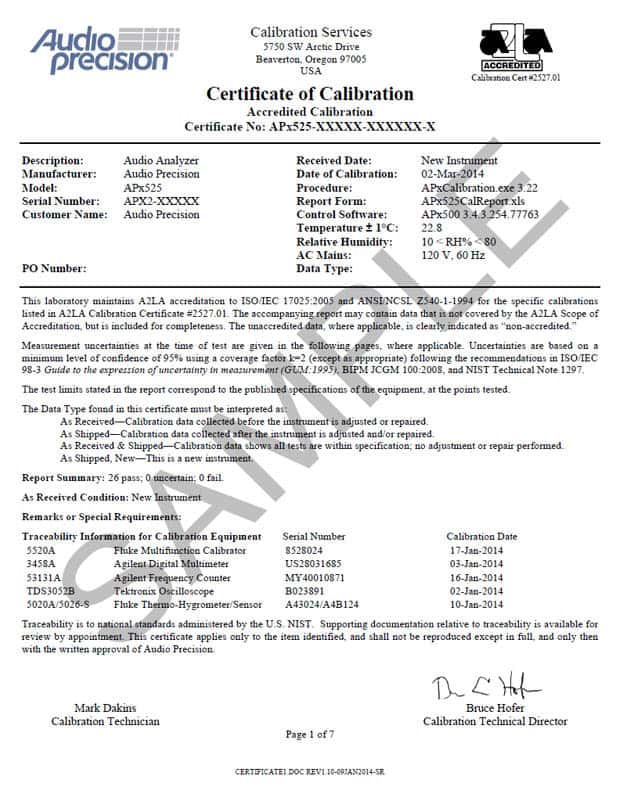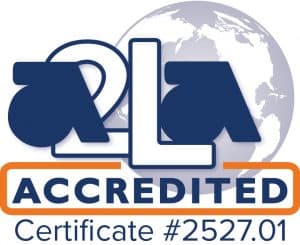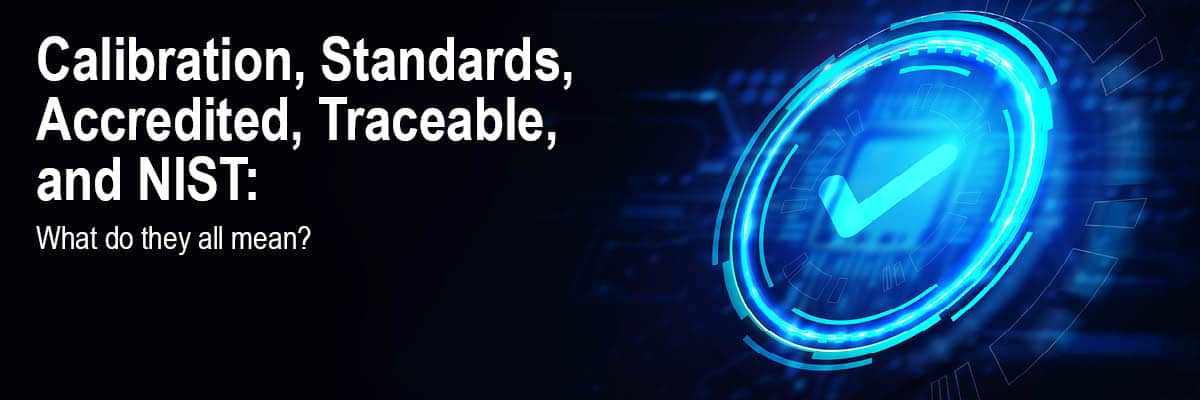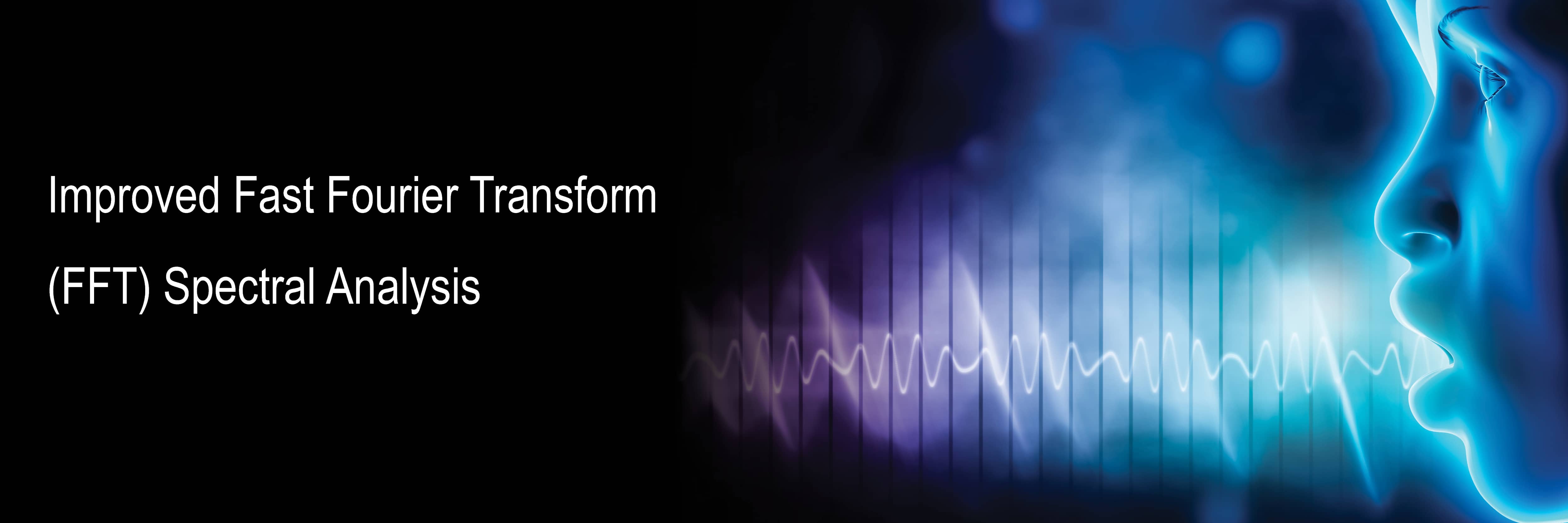Calibration, Standards, Accredited, Traceable, and NIST: What do they
Anyone who uses a measurement instrument in their work has likely dealt with the calibration of their device. Sometimes this means sending the equipment to a laboratory or the original manufacturer. You have likely heard terms such as traceable, accredited, or NIST (or other National Metrological Institutes) bandied about. What do these terms mean?
CALIBRATION
To start – Calibration – is simply defined as the comparison of a measurement instrument’s performance to a standard of known accuracy. That’s it. The process can also include other activities but, at its most basic level, when a device is calibrated it is just compared to a signal or object of known accuracy.
In our case, the word standard is used to identify a piece of test equipment that has known accuracy or, put another way, the standard is our reference. We establish the accuracy of a measurement device, such as an Audio Precision audio analyzer by making a measurement of a known thing, the standard.
If the question is: “is my AP audio analyzer accurate?”, calibration is how you answer that question. Do you think your analyzer is making accurate measurements? How accurate is it? Does it meet its specifications? Calibration answers these questions. (See other Calibration FAQs here.)

An example calibration certificate, showing key information on the instrument and its calibration process.
What about those other activities that can be done as part of the calibration process, such as adjusting the unit that is being calibrated. Adjustment or repair is really a separate issue from calibration, but at Audio Precision our process does include performing adjustments to optimize the performance of an analyzer. Some people will call this recentering – it means that the unit is adjusted for peak performance.
TRACEABILITY / NIST
When we calibrate an instrument using a standard, the next question is what makes us confident that standard is accurate. The answer is that the standard we are using has been periodically calibrated using another standard which eventually can be traced directly, or via collaboration, to a standard maintained by a National Metrology Institute (NMI). In the U.S., NIST (National Institute of Standards and Technology) is the designated NMI.
This is Traceability, sometimes referred to as NIST Traceability.
This Traceability chain includes measurement uncertainties and follows the relationship from your analyzer all the way to the standard used by the NIST or other NMI. At Audio Precision, when we calibrate an analyzer, the calibration certificate lists the standards we use and this represents the first link in the traceability chain.
The authorities granting accreditation to a calibration lab require that the standards being used are in turn calibrated by another accredited lab to establish and demonstrate the integrity of the chain of traceability.
ACCREDITATION
So, what is Accreditation? Accreditation is a process a calibration laboratory uses to demonstrate competency.
Accreditation is issued by independent recognized authorities as an indication that the calibration lab uses sound metrology principles and possesses the equipment, procedures, and technical competence to provide valid measurement results.
To obtain accreditation under ISO 17025, a facility must establish and document numerous procedures and policies, including:
• Suitability and maintenance of standards
• Validation of techniques and software
• Operator competence and training
• Quality System (including Change Control)
• Document Control
• Internal Audits (including Inter-Lab comparisons)
• Measurement Uncertainty
• Review of requests and contracts
• Calibration Report contents
• Control of environmental conditions
• External Audits by the Accrediting body
In all, the requirements cover over 20 areas that must be implemented, documented, and maintained. After demonstrating all requirements have been met, the laboratory is accredited and is authorized to issue accredited calibration reports and certificates. On an annual basis the lab is audited to confirm continued compliance.
As to what this means to our customers, it means independent technical experts have confirmed that the Audio Precision calibration laboratory has been examined, audited, and found to operate according to ISO 17025 and has the capability to consistently issue technically valid and accurate calibration reports.
In summary, calibration refers to assessing the accuracy of a measurement device by comparing it to a standard of known accuracy. Traceability refers to a chain of measurement that connect the accuracy of a measurement instrument all the way to a standard maintained by a national metrological institute. Folks will sometimes use shorthand such as NIST to indicate that a calibration has been made where the traceability is to the National Institutes of Standards and Technology. Finally, accreditation is the process by which a laboratory is confirmed by an independent 3rd party to be competent to perform calibrations.

Audio Precision is accredited by the American Association for Laboratory Accreditation (A2LA) under ISO/IEC 17025:2017 for equipment calibration at our main factory in the USA.




